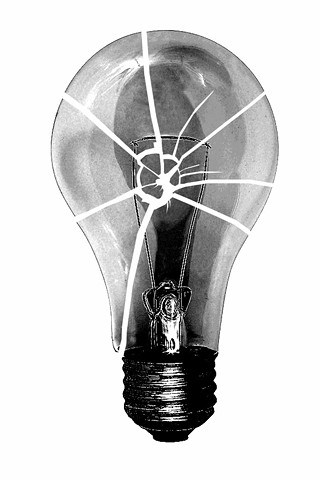One Thursday night last month, a remarkable thing happened in London, England: At 9pm local time, the lights went out. For the first time since the blackouts of WWII, the neon advertising signs in Piccadilly Circus were turned off. The Houses of Parliament and Buckingham Palace went dark and building managers and home owners joined in, throwing light switches across the city to the "off" position.
The Lights Out campaign followed similar events in Sydney, Australia, Rome and Paris, all designed to raise awareness of global warming and encourage conservation.
Organizers say the one hour of darkness saved 380 tonnes of greenhouse gas emissions. More importantly, people had to think through how they use electric lights—which lights are not essential and do we really need to have them on all the time? Hopefully, having thought about it once, they'll change their practices in future.
Good for London, but how are we doing on this side of the Atlantic? Not so good I discovered, as I walked around downtown Halifax a few times last week.
To their credit, the big banks are concerned about their electricity use, or at least their power bills: The Bank of Montreal and RBC towers were completely dark. But other large office buildings seemed indifferent.
"Our conservation efforts are probably one of the best in Halifax," says Gail Tucker at Fortis Properties, which owns and operates the Maritime Centre. "We have an energy management system and our guys make three separate sweeps a night to turn off unnecessary lights."
But if so, why are so many lights on at night?
"It's a large building, with over 2,000 people working in it and a lot at night," she explains. "There are also cleaning crews that turn on lights while they work."
That's evidently an industrious set of office workers and ever-ubiquitous cleaning crews, since about a quarter of the building's lights were on on Canada Day night.
What about the tower sporting an Emera logo above Scotia Square, which leaves about half its lights on? "We only lease a few floors," says Glennie Langille, an Emera spokesperson. "We have an all-night call centre on the 15th floor, but all our other offices have an automatic shut-off at seven o'clock."
Crombie Properties, which manages the building, didn't return a call for comment.
The office building which was the most lit up, with almost all of its lights on at 10:30pm on one Wednesday night, was One Government Place, which houses the provincial legislative offices.
Spokesperson Shalon McLachlan says she's not sure exactly why the lights were on, but suggests cleaners and late-night government workers could explain the phenomenon. "The premier works outside regular business hours," she says.
The inanity and wastefulness of the Casino's video jumbotron speaks for itself.
And then there are the "vanity lights" strung along the support cables of the Macdonald Bridge. "They were turned on on January 1, 2000, as part of the millennium project," says Steve Snider, CEO of the bridge commission. "They're decorative lights, not functional."
Snider says the lights come on at dusk but he isn't sure when they are turned off. One night last week they weren't turned on at all. Another night they went off at 10pm, a third night not until midnight. There's evidently no set policy. And Snider doesn't know how much energy they consume or what they cost to operate.
Given the challenge of global warming, all of us, corporate execs included, should be concerned about what lighting is costing us. It's time we had our own Lights Out campaign.
Light up my life. Email: [email protected].













